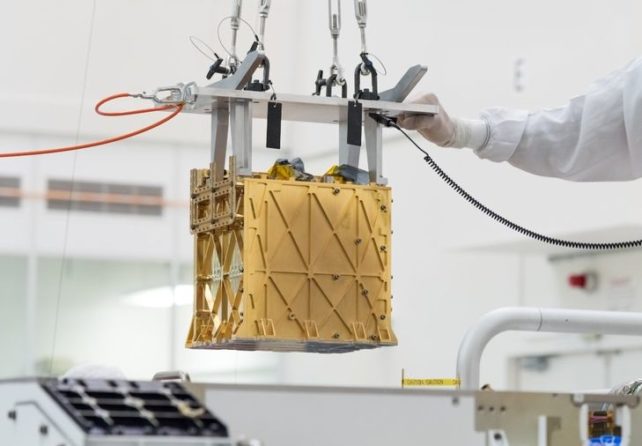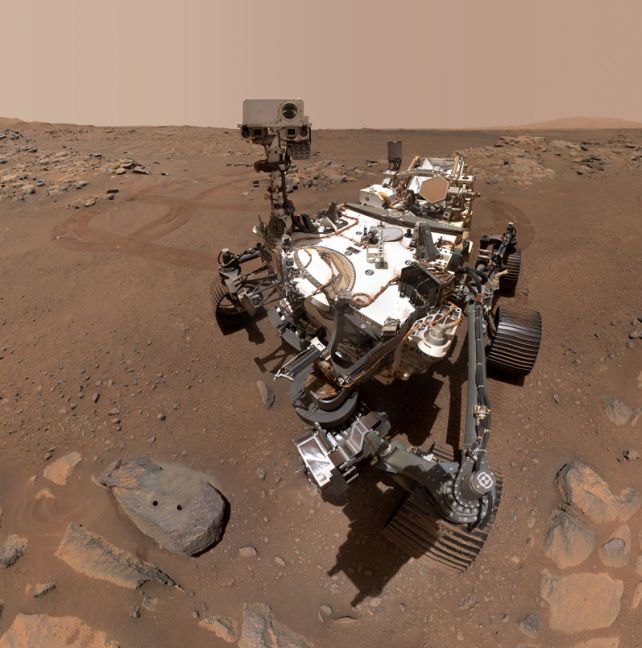An experiment on Mars has shown that it is possible to extract breathable oxygen from the thin Martian atmosphere.

In its tiny home in the belly of NASA’s Perseverance rover, the briefcase-sized In Situ Resource Utilization Experiment (ISRU) (MOXIE) repeatedly smashes Martian air molecules to produce a small but constant supply of oxygen.
Now MOXIE is retiring after a job well done.
“MOXIE’s impressive performance shows that extracting oxygen from Mars is possible” – oxygen that could provide future astronauts with breathing air or rocket fuel, said Pam Melroy, NASA’s deputy Mars administrator.
“Developing technologies that allow us to exploit the resources of the Moon and Mars is critical to establishing a long-term presence on the Moon, creating a robust lunar economy, and supporting the first human exploration campaign on Mars Meaning.”

The MOXIE experiment, designed by MIT scientists, has been running since Perseverance landed on Mars in February 2021. Not continuously; operators here on Earth sent commands to MOXIE to see how it runs over time under different Martian conditions.
Since then, MOXIE has produced a total of 122 grams of oxygen in 16 runs. That’s enough to keep a small dog breathing for 10 hours, and a human for four hours, according to NASA.
It works by electrolysis, which uses electricity to electrochemically break down carbon dioxide into its constituent atoms. MOXIE sucks in Martian air through a filter and purifies it. This purified Martian air is compressed, heated, and sent to a solid oxide electrolyzer (SOXE). The electrolyzer breaks down carbon dioxide into carbon monoxide and oxygen ions.
Carbon monoxide is released, but the oxygen atoms recombine to form O2, or oxygen molecules. The kind we need to survive. The amount and purity of this gas is measured before it is released again.
Each run takes several hours. After several hours of warm-up, MOXIE collects oxygen for 1 hour per experiment and then enters a shutdown phase. MOXIE is designed to produce up to 10 grams of breathable oxygen during this hour of operation, which is the equivalent of about 20 minutes for an astronaut.
At least on paper. The actual amount that can be produced varies. In its 16th run on August 7, MOXIE extracted about 9.8 grams of breathable oxygen, which was pretty close to its goal. This shows that Mars’ atmosphere, although thin and tenuous, can provide oxygen.”
The MOXIE experiment, designed by MIT scientists, has been running since Perseverance landed on Mars in February 2021. Not continuously; operators here on Earth sent commands to MOXIE to see how it runs over time under different Martian conditions.

Even in the worst case, a device such as MOXIE would be able to supplement other supplies of oxygen, reducing the amount of cargo needed to be ferried from Earth.
But with what they’ve learned from MOXIE, researchers led by MIT physicist and MOXIE principal investigator Michael Hecht believe they can develop a large-scale system, including a new, improved version of the oxygen extraction device, a means of liquefying it gas. and a means of storing liquids.
Future Mars explorers will need all the help they can get to become self-sufficient. Between the breathing needs of a team of astronauts on Mars for a year and the liquid fuel needed to power the spacecraft, about 500 tons of oxygen are needed.
But that will have to wait. Many problems need to be tested and solved before humanity attempts an extended stay on the Red Planet.Oxygen is just one of them.
“We need to decide what things we want to test on Mars”; – said Hecht. “I think there are a lot of technologies on this list; I’m so glad MOXIE was first.
A paper on MOXIE’s first 7 runs was published in Science Advances last year.






